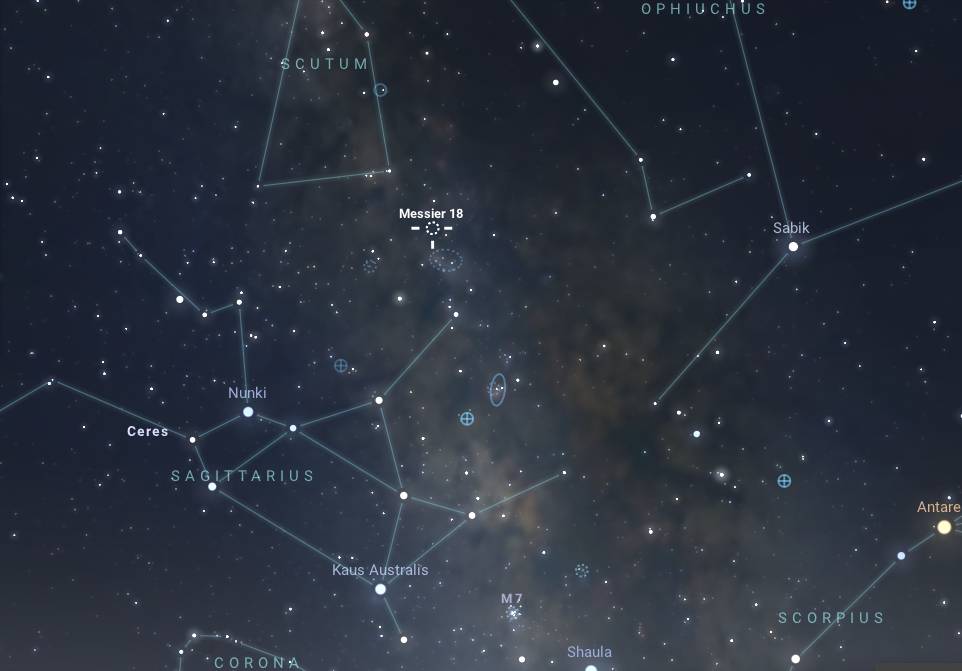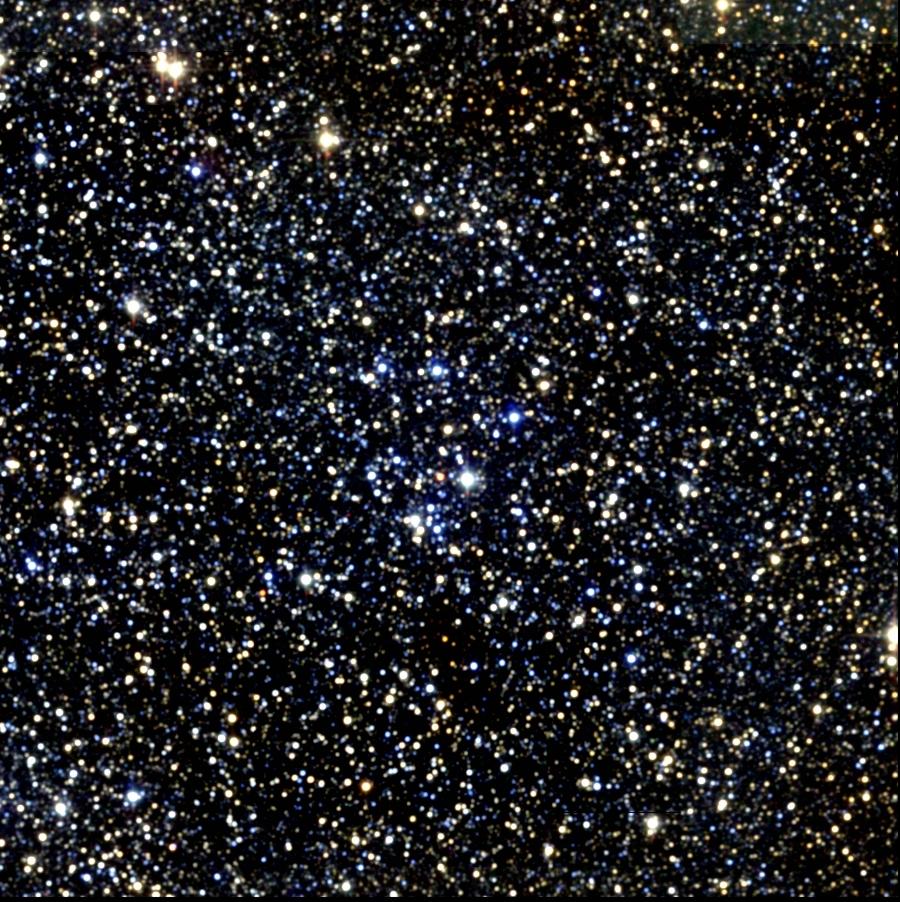Messier 18 (M18), also known as the Sagittarius Star Cloud, is an open cluster in the constellation Sagittarius, positioned near the well-known “Teapot” asterism. Located approximately 4,900 light-years from Earth, its estimated distance is based on its apparent brightness and the known properties of its stars. M18 was discovered by French astronomer Charles Messier in 1764, adding to his catalogue of nebulae and star clusters visible from the Northern Hemisphere. Here is a detailed look at M18:
Composition
Open clusters like M18 form when a molecular cloud collapses under its gravity, giving birth to stars that share a common origin. These stars are typically relatively young, ranging from a few dozen to a few thousand in total per cluster. In M18, the stars are primarily young, hot, and blue, which classifies them as spectral type B stars. Blue stars are massive and burn through their fuel quickly, giving M18 a strikingly vibrant, blue hue. Despite its youthful stars, some older, cooler stars (often red or yellow) may also be found within the cluster, indicating that star formation may have occurred over an extended period within the same molecular cloud.
M18 spans approximately 17 light-years across and is estimated to be around 32 million years old. This age categorizes it as a younger open cluster, especially when compared to more ancient groups like the Pleiades, which is around 100 million years old. The relatively short lifespan of massive blue stars also means that M18 is unlikely to retain its current shape and density for as long as more stable open clusters do, as its stars will either evolve or drift apart in the next several million years.
Observation
For observers in the Northern Hemisphere, M18 is best viewed during the summer, particularly from June to August, when Sagittarius reaches its highest point in the night sky. Located within Sagittarius near the densest part of the Milky Way, M18 is surrounded by a rich backdrop of stars and interstellar clouds, enhancing the observing experience. To locate M18, astronomers can begin at the “Teapot” asterism and search for a faint cluster nearby.
In the Southern Hemisphere, M18 is also visible from June to August, aligning with the winter months there. During this period, it appears higher in the sky, offering southern observers a slight advantage in clarity and visibility. This timing makes M18 accessible to stargazers worldwide and offers an excellent opportunity to observe it against the contrasting colours and density of the Milky Way.

With a visual magnitude of around 7.5, M18 is relatively faint compared to more prominent Messier objects. However, it remains accessible to amateur astronomers with binoculars or a small telescope. At lower magnifications, M18 appears as a faint, nebulous patch of light, but with higher magnification, individual stars within the cluster begin to resolve, creating a more intricate view. When viewed through binoculars, it may appear as a subtle cloud, while telescopes reveal the bluish glow typical of its younger stars.
For amateur astronomers, observing M18 is a rewarding experience, especially for those interested in exploring the Milky Way’s dense star fields. Its relatively close distance and bright blue stars offer insights into the lifecycle and composition of young star clusters within our galaxy.



